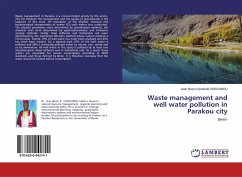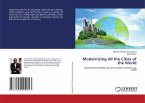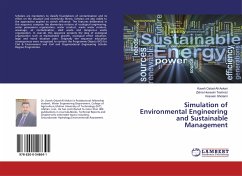Waste management in Parakou is a non-controlled activity by the actors. The link between this management and the quality of groundwater is the keypoint of this work. An evaluation of the physical, chemical and bacteriological characteristics of twelve (12) well- waters was conducted. The physical parameters were determined by standardized methods, the chemical ones were determined by spectrophotometer and titrimetric analysis methods. Finally, total coliforms and Escherichia coli were determined by the membrane filtration method whose culture medium is Chrom-Agar. Overall, 97% of well water has never been analyzed and 63% has never been treated. On a physical level, 67% of the well- water is polluted and 58% is chemically polluted either by nitrate, iron, nitrite and or by ammonium. All well water in the study is polluted by at least one microbial germ (total coliforms and or Escherichia coli). As a result, these waters are unsuitable for human consumption according to WHO standards and those defined by Benin. It is therefore necessary that the water should be treated before consumption.








